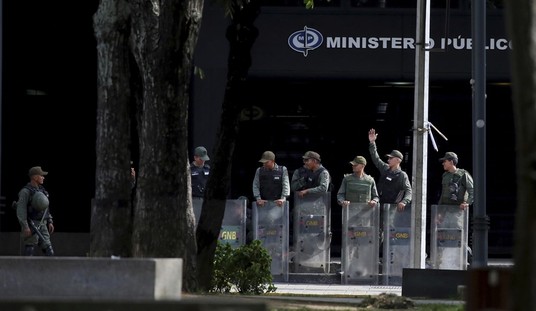A source who wishes to remain anonymous sent these memos to us today. They’re purported to be internal Federal Emergency Management Agency memos written in reaction to the hack that briefly turned a few Montana TV stations into a zombie apocalypse warning system.
The first of the FEMA notes merely describes the hack itself.
Wednesday Feb 13
Federal Emergency Management Agency
Hackers Able To Broadcast Zombie Warnings Through EAS On Several TV Stations Nationwide. The AP (2/13) reports that “the Montana Television Network says hackers broke into the Emergency Alert System of Great Falls affiliate KRTV and its CW station Monday” and “broadcast that ‘dead bodies are rising from their graves’ in several Montana counties.” According to the AP, “the alert claimed the bodies were ‘attacking the living’ and warned people not to ‘approach or apprehend these bodies as they are extremely dangerous.
The second, dated today, goes into more detail.
Thursday Feb 14, 2013
Federal Officials Investigating Zombie Emergency Alert Hacking. In continuing coverage from Wednesday’s briefing, USA Today (2/13, Beall, 1.71M) reports from Great Falls, Montana that “zombies weren’t walking the streets here Monday, but a false alert that aired on two local TV stations went through the same channels on which true emergencies are aired, raising questions and concerns of how the hoax occurred.” In a prank that reached around 10 stations in Montana, Michigan, California, Utah and New Mexico, hackers were able to access the Emergency Alert System and issue a scrolling warning and voice-over that claimed “there were ‘dead bodies rising from the grave and attacking the living’ and urged people to use caution.” Greg MacDonald, the CEO of Montana Broadcasters Association, said “the FBI and the FCC are investigating the cases, and initial findings have officials believing the hoax originated somewhere overseas.”
The AP (2/14, Karoub, Brown) adds that “the subject matter may be humorous,” but MacDonald said “the consequences of such attacks on the alert system could be severe,” noting, “Suddenly you create a panic and people are fleeing somewhere and you end up with traffic jams and accidents and who knows what.” Meanwhile, “the Federal Emergency Management Agency said its public alert and warning system wasn’t breached and the hacking incidents did not affect its ability to activate the system nationally. FEMA also said it’s supporting the FCC and other federal agencies on the investigation.”
According to broadcasters, Reuters (2/14, Finkle) reports, hackers were able to infiltrate the emergency broadcast systems in those areas because the stations had failed to change factory default passwords. Mike Davis, a hardware security expert with a firm known as IOActive Labs, said that he was able to use Google’s search engine to identify nearly 30 alert systems across the US that he believed were vulnerable to attack as of Wednesday morning. Davis, who last month sent a detailed report about vulnerabilities in EAS equipment to the Department of Homeland Security’s U.S. Computer Emergency Readiness Team, said, “Somebody could have delivered their message to a lot more systems.”
FEMA seems to have been caught by surprise here.
They also appear to be extensively using open source media material to understand what went on.
Just how ready are we for a legitimate hack or terror attack? These memos don’t offer many answers by themselves, but they do suggest that terrorists could create significant panic with little devious creativity.









Join the conversation as a VIP Member